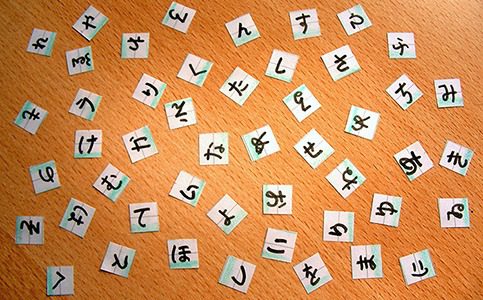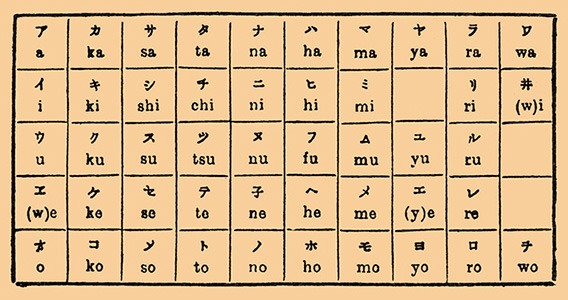Hiragana vs Katakana: Japanese 101
To the untrained eye, the Japanese language can look quite puzzling, like a quilt made of different textures. The characters don’t all look alike or even similar.
The reason for this is that Japanese is composed of three different scripts: hiragana, katakana and kanji. Hiragana and katakana are syllabic scripts in which each character stands for a syllable; for example, “が” evokes “ga” and “ア” evokes “a.” These scripts are native to the Japanese language.
On the other hand, Kanji (for example, 好) are characters derived from the Chinese language. They have the same written form, but the pronunciation has changed and the meaning has deviated in some cases.
Before you learn to read in Japanese, let’s make the distinction between hiragana vs katakana. These two are the “alphabet” scripts of the Japanese language, as each one corresponds to a sound rather than a meaning. But why do the Japanese need two? What are they used for?
Hiragana
Hiragana (or ひらがな) is the most frequently used script today, said to have been invented in the 9th century by a Buddhist priest. There are 46 basic Hiragana symbols, and these can be combined together to create many different sounds.
Reading hiragana is quite simple, as each symbol has just one pronunciation not unlike the letters of the English alphabet. For example, あ、い、う、え、お correspond to “a,” “i,” “u,” “e” and “o” respectively. There are also “vowels” in the Japanese language, though there are nuanced differences from English in their pronunciation.

Hiragana also has strong ties to the basics of the Japanese language. There are many words that are only written in hiragana, such as basic grammatical units (は、に、を、と、で, etc.), greetings, and some onomatopoeia.
Do you already know any of the following greetings?
こんにちは, “konnichiwa”
さよなら, “sayonara”
ありがとう, “arigatou”
おめでとう, “omedetou”
ようこそ, “youkoso”
おはよう, “ohayou”
Answers: hello, goodbye, thank you, congratulations, welcome, good morning.
Katakana
Katakana (or カタカナ) is a writing form that has its origins in the Heian period, 794-1185 AD. It was used to aid the reading of kanji, but today it is used most often to denote words imported from foreign countries. Like hiragana, there are 46 basic katakana symbols in the Japanese language with each symbol corresponding to a syllable.
Katakana is also used for native Japanese words in some circumstances. Sometimes, it is to emphasize a word. For example, まじ?(seriously?) can become マジ?in a manga script. Onomatopoeia can also be written in katakana, usually for an emphatic effect.
Some foreign words sound similar in Japanese to how they do in the original language, but some of them have deviated to become unrecognizable. Can you guess the meaning of the following?
アイスクリーム (“aisu kuriimu”)
ズボン (“zubon”)
パソコン (“pasokon”)
コーヒー (“koohii”)
ワンピース (“one-piece”)
ホチキス (“hochikisu”)
ビジネス (“bijinesu”)
マンション (“manshon”)
Answers: ice cream, trousers (or pants for Americans), PC or personal computer, coffee, one-piece dress, business, upper-market apartment (not mansion!)

Hiragana vs katakana: which one should you learn first?
It depends on you! Both can be learned quickly, although you’ll build up your reading speed and fluency over time. Learning both at the same time may cause some confusion, so it may be helpful to focus on one first before the other.
I would recommend going with hiragana, as it is the most commonly used script in the language. This will be the language that will get you the most natural reading practice, too.
Once you master one, the other script will be much faster to learn, as you’ll already know what syllables to expect.
The best way to study hiragana and katakana
The best way to study hiragana or katakana is to learn it in its natural context and do lots of reading.
This is where LingQ excels.
LingQ has loads of great content for you to read. Even if you don’t know all the hiragana and katakana just yet, you can easily look them up and see how they’re pronounced and save their meanings. Check out this video tutorial to see how you can learn Japanese using LingQ.
Katakana is used less frequently in natural contexts, but there are still some ways to find it. Manga is full of katakana to create the sound and emphasis effects that the script brings. Instead of わんわん (wanwan), it’s ワンワン for a dog barking. You might also see a line of オオオオ(oooo) down a page to indicate a sudden escalation of tension. Plenty of untranslated manga can be found online through a quick search, so this is one way of studying katakana that is easily available.
In either case of hiragana or katakana, you can also utilize the old-fashioned drilling method. You can do this on LingQ (available for both Android and iOS) with the vocabulary exercises. LingQ is the best way to learn Japanese online because it lets you learn from content you enjoy!
That’s all it takes to learn hiragana and katakana. Pretty simple.
So there you have it, hiragana vs katakana explained. Soon you’ll be able to read the majority of the Japanese language–even if you don’t understand much!
Enjoyed this post? Check out polyglot and LingQ cofounder Steve Kaufmann’s YouTube video for some tips for learning Japanese!
***
Connie Huang has self-studied the Japanese language for over a decade. In addition to Japanese, she knows Mandarin Chinese, Spanish and French.


